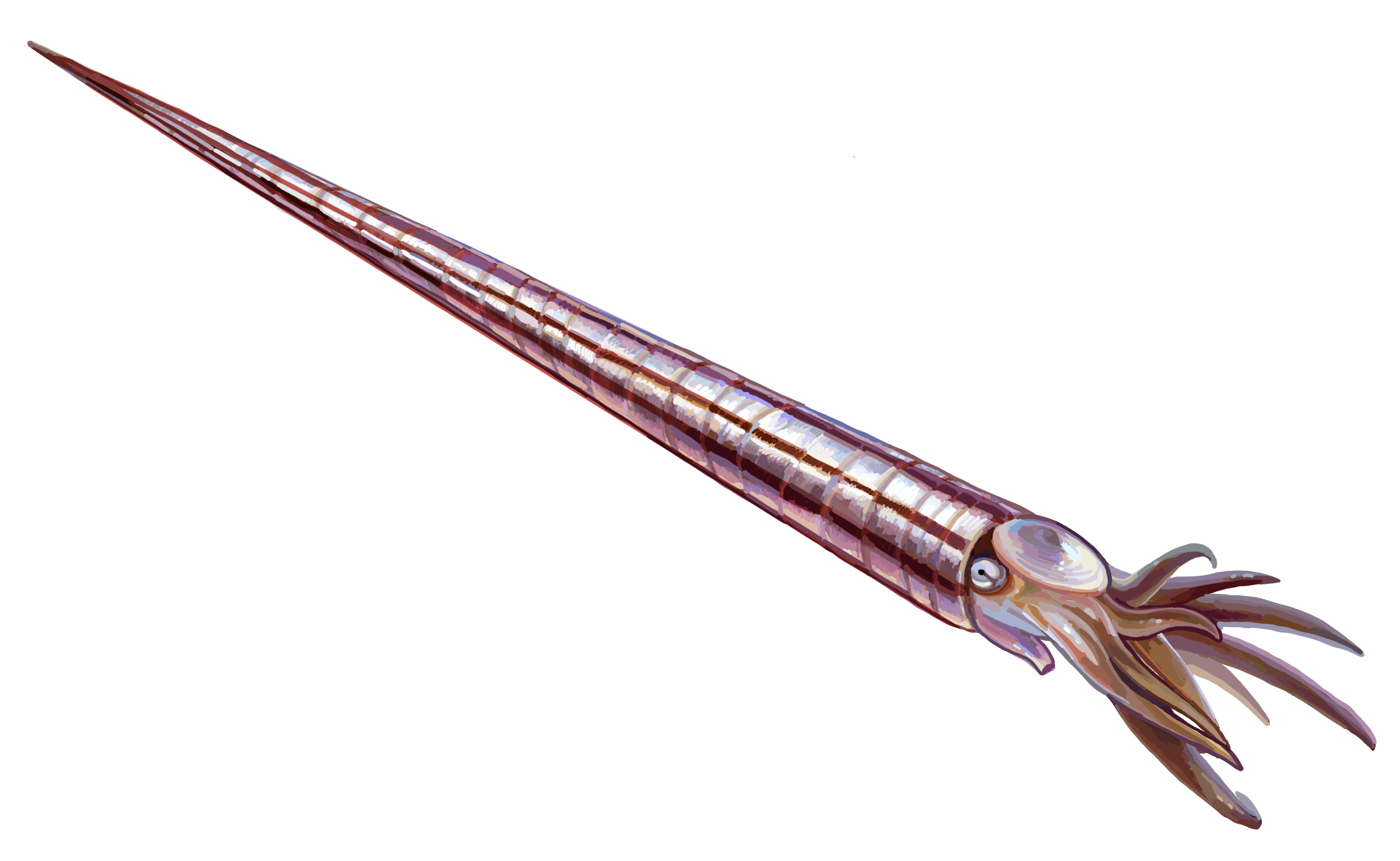|
Anthoceras
''Anthoceras'' is a genus of straight, annulated, proterocamerioceratids (Order Endocerida) from the Lower Ordovician The Ordovician ( ) is a geologic period and system, the second of six periods of the Paleozoic Era. The Ordovician spans 41.6 million years from the end of the Cambrian Period million years ago (Mya) to the start of the Silurian Period Mya. The ..., found in North America, NW Australia, and Siberia. The cross section is circular, the siphuncle moderately large, and marginal. Segments are constricted (producing concave profiles in internal molds); septal necks hemichoantici to subholochoantic (reaching halfway to almost to the previous septum); connecting rings thick. Endocones are long and slightly asymmetric. This genus is based on the phragmocone, the chambered part of the shell; the apical and apertural ends are unknown. See also * * References * Curt Teichert, 1964. Endoceratoidea. Treatise on Invertebrate Paleontology, Part K. Geol Soc. of Ame ... [...More Info...] [...Related Items...] OR: [Wikipedia] [Google] [Baidu] |
Proterocameroceratidae
The ''Proterocameroceratidae'' were the first of the Endocerida. They began early in the Ordovician with ''Proendoceras'' or similar genus which had developed endocones, replacing the diaphragms of the ellesmerocerid ancestor. Proterocameroceratids are long, straight or gently curved with a generally narrow siphuncle along the ventral margin. Septal necks are short, never quite reaching the previous septum and may vary in length ontogenically within a species. Connecting rings are thick and layered. Endocones are simple, especially in early forms but may be complex with secondary structures in later forms. The Proterocameroceratidae gave rise to the Piloceratidae early on, and later to the Manchuroceratidae and Chihlioceratidae, from which the Allotrioceratidae are derived, and later yet possibly to the Emmonsoceratidae and Najaceratidae. The Piloceratidae in turn may have given rise to the Endoceratidae although a proterocameroceratid ancestor remains possible. Proterocamerocer ... [...More Info...] [...Related Items...] OR: [Wikipedia] [Google] [Baidu] |
Endocerida
Endocerida is an extinct nautiloid order, a group of cephalopods from the Lower Paleozoic with cone-like deposits in their siphuncle. Endocerida was a diverse group of cephalopods that lived from the Early Ordovician possibly to the Late Silurian. Their shells were variable in form. Some were straight (orthoconic), others curved (cyrtoconic); some were long (longiconic), others short (breviconic). Some long-shelled forms like '' Endoceras'' attained shell lengths close to . The related ''Cameroceras'' is anecdotally reported to have reached lengths approaching , but these claims are problematic. The overwhelming majority of endocerids and nautiloids in general are much smaller, usually less than a meter long when fully grown. Morphology Endocerids had a relatively small body chamber as well as a proportionally large siphuncle, which in some genera reached nearly half the shell diameter. This suggests that much of the visceral mass may have been housed within the siphuncle ... [...More Info...] [...Related Items...] OR: [Wikipedia] [Google] [Baidu] |
Lower Ordovician
The Ordovician ( ) is a geologic period and system, the second of six periods of the Paleozoic Era. The Ordovician spans 41.6 million years from the end of the Cambrian Period million years ago (Mya) to the start of the Silurian Period Mya. The Ordovician, named after the Welsh tribe of the Ordovices, was defined by Charles Lapworth in 1879 to resolve a dispute between followers of Adam Sedgwick and Roderick Murchison, who were placing the same rock beds in North Wales in the Cambrian and Silurian systems, respectively. Lapworth recognized that the fossil fauna in the disputed strata were different from those of either the Cambrian or the Silurian systems, and placed them in a system of their own. The Ordovician received international approval in 1960 (forty years after Lapworth's death), when it was adopted as an official period of the Paleozoic Era by the International Geological Congress. Life continued to flourish during the Ordovician as it did in the earlier Cambrian Peri ... [...More Info...] [...Related Items...] OR: [Wikipedia] [Google] [Baidu] |
